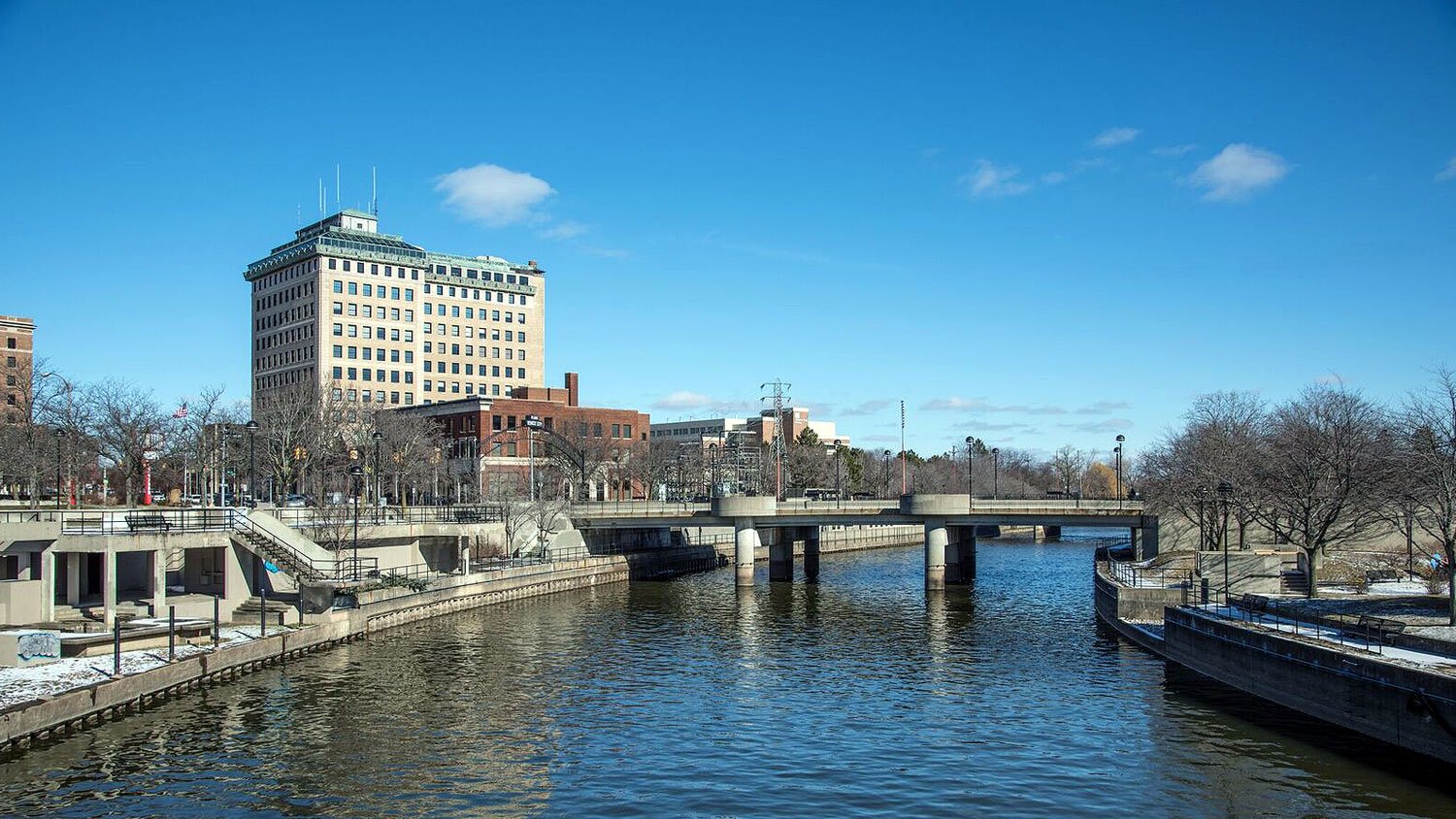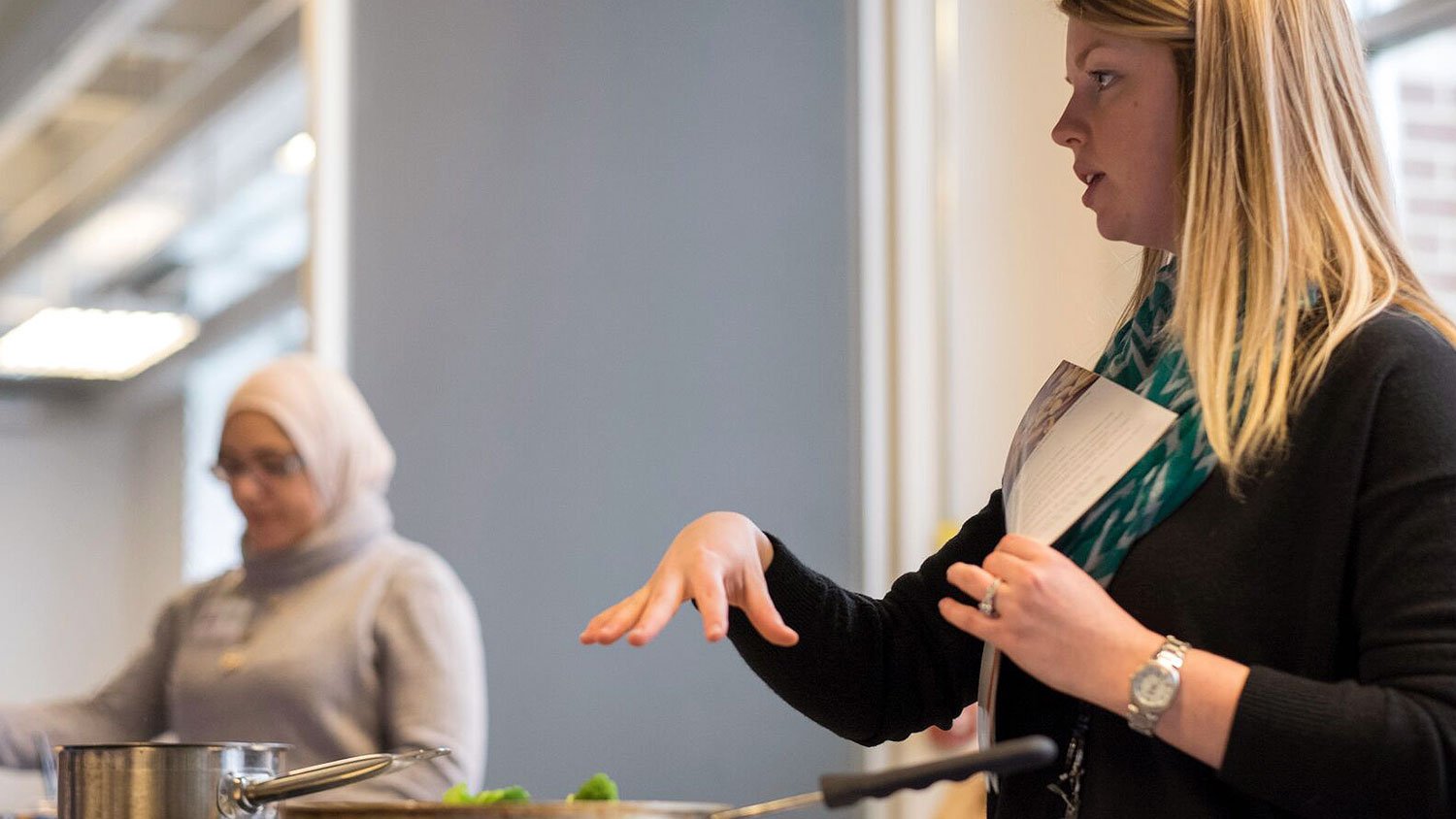From the streets of Flint, Mich., to rural towns in the state’s Upper Peninsula, Michigan State University College of Human Medicine (MSU) has been deeply committed to community service for decades.
In recognition of its partnership with diverse communities and efforts to improve health care across the state, the college will receive the AAMC’s Spencer Foreman Award for Outstanding Community Service on Nov. 12 at Learn Serve Lead 2016: The AAMC Annual Meeting. Named for Spencer "Spike" Foreman, MD, who established the award in 1993 while serving as AAMC chair, the award honors academic medical institutions with long-standing commitments to addressing community needs.
The 2016 award is not based solely on MSU’s nationally recognized role in discovering toxic levels of lead in the blood of Flint’s children but for less publicized achievements throughout the state. Like previous award recipients, the college is cited for programs that go beyond the traditional role of academic medicine, reach communities whose needs are unmet by the traditional health delivery system, and exemplify a genuine partnership with the community, explained Philip M. Alberti, PhD, AAMC senior director of health equity research and policy. The award does not honor any one specialized program or individual but recognizes broad-based collaborations between institutions and their communities.
“This is a great honor for our people who do such a great job,” said Aron Sousa, MD, former interim dean of MSU College of Human Medicine and current senior associate dean for academic affairs at MSU. “We are the first land-grant university and one of the very first community-based medical colleges in the country. We live in an environment of service to our communities, so it’s part and parcel of who we are. We not only train physicians and do research, we create a scientific safety net for our communities by working with community groups and leaders.”
“We not only train physicians and do research, we create a scientific safety net for our communities by working with community groups and leaders.”
Aron Sousa, MD
Michigan State University College of Human Medicine
The medical school has been involved in Flint, an economically distressed area, for more than three decades. Through public health research and practice in Flint, the college had established strong roots in the community, allowing it to act expeditiously when toxic levels of lead were discovered in the city’s drinking water in 2015. With the existing infrastructure of community participation, MSU was able to respond quickly to assess the relationship between elevated lead levels in the water supply and the blood lead levels in about 8,000 children under age six. Since the lead crisis erupted, MSU has been mitigating effects of the situation through its pediatric clinic and educational and nutritional programs. The medical college also partners with the Flint community in programs focusing on mental health, drug treatment, maternal-infant support, and early literacy.
In 2014, MSU created the Flint Public Health Research Advisory Committee to support its public health–focused initiatives. The committee comprises representatives from the university, area hospitals, community stakeholders, and local government. After identifying three focus areas for community-based research—healthy behaviors, chronic diseases, and behavioral health—the community helped recruit and select top researchers to address those issues.
These collaborations are “truly unique,” Alberti said, noting that community members gauged the kinds of research they felt would be most relevant to their community and were given the power to make institutional decisions. “Flint was given a real voice, with the authority to select research projects and hire staff. MSU leaders incorporated the community’s voice in the scientific partnership,” Alberti added.
MSU also helped establish the Healthy Flint Research Coordinating Center, which brings together Flint residents, health providers, and academic institutions to provide a mechanism for residents to coauthor research papers and participate in the research ethics review board.

A strong presence in rural communities
MSU has seven campuses, each in a unique setting. Like their urban siblings, the regional campuses all have strong bonds with their communities, many of which are medically underserved. In 1974, MSU launched the Rural Physician Program (RPP) to stem a local physician shortage. RPP provides medical students with enriched clinical experiences and community service opportunities designed to encourage them to establish practices in Michigan's rural communities.
Each year, 12 students are selected to complete their third and fourth clinical years at the Upper Peninsula Region campus. Students who are from rural Michigan or are considering eventual practice in small-town settings receive preference for RPP. Most RPP graduates enter primary care fields.
“We have 30 years of data showing that 26 percent of RPP graduates have come back to the [Upper Peninsula] and are actively practicing medicine there,” said Andrea Wendling, MD, an associate professor and the director of Rural Health Curriculum. She added that 45 percent of RPP graduates are practicing in rural communities. “This shows communities we’re invested and not going anywhere.”
When the RPP was conceived in the 1970s, the concept was met with skepticism, explained Bill Short, MD, community assistant dean at MSU’s Upper Peninsula Region campus. “The traditional, established view was that medical education had to take place centrally in university hospitals. But this was a 180-degree [opposition] to that. We didn’t have to have a large university hospital. We have multiple partnership hospitals and a centrally based regional hospital.”
In 2012, the college expanded its rural programming by creating the Rural Community Health Program (R-CHP), which places an additional 12 students annually in rural communities in the Lower Peninsula.
RPP and R-CHP students get a wide range of clinical experiences in the small 25- to 150-bed hospitals that participate in the programs. They may see hypothermia in boaters and hikers or learn how to splint in the field when working with volunteer downhill ski patrols. They could have the unique experience of witnessing faculty treat divers for decompression sickness in a hyperbaric chamber at a hospital near Lake Huron. In Clare, a town with one of the state’s highest health needs, Wendling explained, students join public health nurses to make home visits to a large Amish population.
“I wanted to practice family and primary care medicine in an area where I could make an impact on patients and the overall health of the community.”
Michelle Seguin, MD
At small community hospitals, students have opportunities to gain firsthand experience that might not be possible at a large teaching hospital. “They’re first [assistants] in surgery because there aren’t residents to do it,” Wendling noted as an example. Outside the hospital setting, students learn about economic and housing needs and work with public health departments and local hospital administrations. “The communities really invite students in,” Wendling said.
The RPP provided valuable training for Michelle Seguin, MD, who has been practicing family medicine for two years in Houghton, a town of 7,700 at the northwestern edge of the state. As a student, she saw “the big picture,” she said, adding, “I had the opportunity to follow a patient with an acute [heart attack] from the emergency department into the cath lab with the cardiologist and then into the ICU for post-cath care.”
“You see all the steps needed for the patient’s comprehensive care. You’re one-on-one with an attending, and you have more autonomy and responsibility. This gives you the independence and resilience that you’ll need in practice.”
Seguin “enjoyed the sense of community in small towns” that she experienced growing up in the Upper Peninsula. “I wanted to practice family and primary care medicine in an area where I could make an impact on patients and the overall health of the community.” Today Seguin sees patients but also fills her days staying engaged with a group of farmers, city officials, and community partners to provide local families with healthy food options. And she is mentoring current students who, like her a few years ago, are headed for careers in rural communities.
